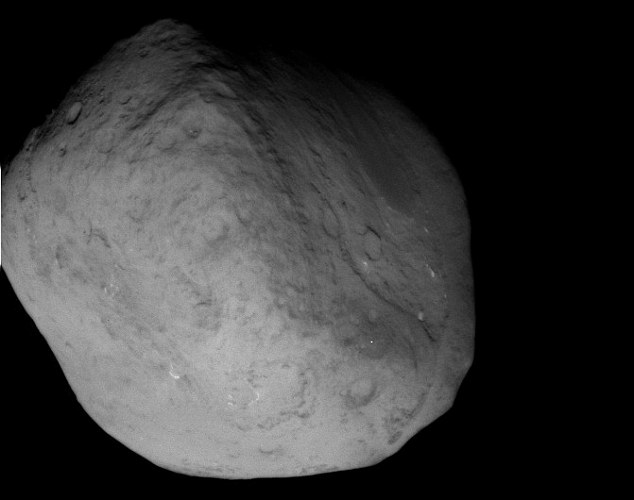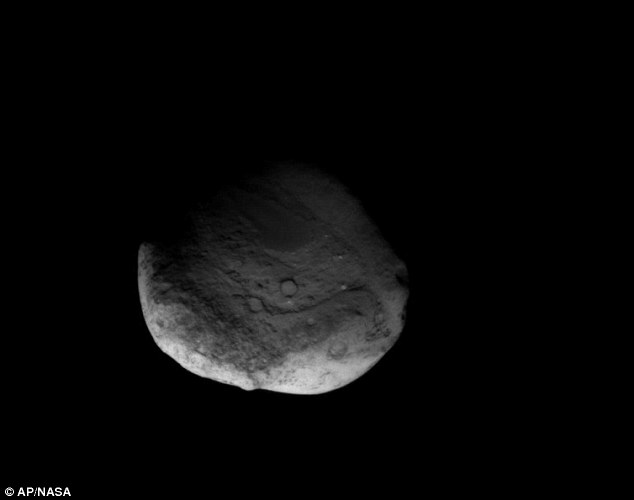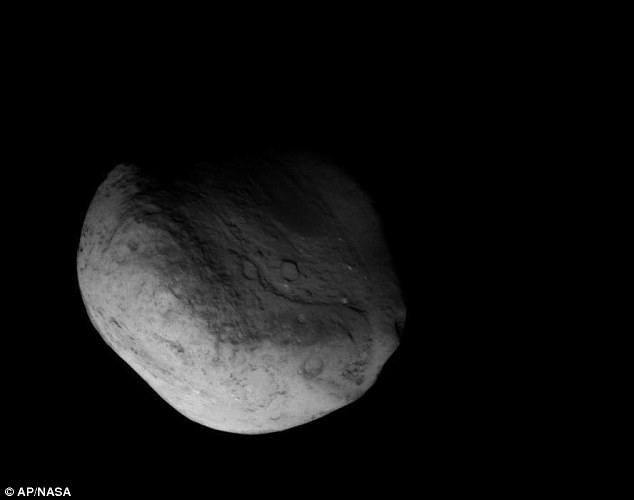
The vessel Stardust flew within 112 miles of the Tempel 1 comet as it hurtled past at 24,000 miles an hour at 4.37am this morning.
Scientists confirmed the encounter, which took place 210million miles from Earth, had been a success 25 minutes later and that Stardust had taken 72 high-resolution pictures as planned.
It has now begun beaming back pictures taken during its fly-by. Nasa's Chris Jones said all the images are stored on the craft and it will take another six hours for everything to be downloaded.
The photos will let researchers compare how Tempel 1 looks now with its appearance in 2005 when a probe from the Deep Impact craft was deliberated slammed into it.
Stardust closed in at the comet closer than scientists had calculated - onboard instruments indicated that the craft was hit by several dust particles.
Since the craft's antenna was pointed away from Earth during the encounter, it'll take several hours for all the images and data to reach the ground.
Scientists plan to spend today sifting through the data to compare how the comet's surface features have changed.
"The hardest part was waiting to see 'all the goodies that are stored on board Stardust," said principal investigator Joe Veverka, a professor of astronomy at Cornell University.
Researchers are interested in studying comets because they could provide clues to how the sun and planets formed. They are thought to contain frozen primordial ingredients that date back to the birth of the solar system some 4.5billion years ago.
By examining the craters scientists hope to unlock more of Tempel 1's secrets, such as whether or not its landscape was caused by internal changes or the impact of asteroids.
Since the last landing Tempel 1 has made a complete orbit which has taken it close to Mercury and all the way out to Jupiter.
NASA experts said that they hoped to ascertain the ages of some of the areas of the comet which look older than others.
They also want to determine if depressions on the crater could have been caused by ice that was stored underground and turned into gas.
Professor Veverka told the New York Times: "Here's a chance where we can see what has changed, how much has changed, so we'll start unravelling the history of a comet's surface. We have no idea whether we're talking about things that have been there for a hundred years, a thousand years, a million years."
Stardust was launched in 1999 and arrived at its main destination in 2004, the comet Wild 2, where it captured a bounty of interstellar and comet dust.
The craft then returned to Earth and dropped its cargo off via parachute - a first in the history of space exploration - before going back into space and heading for Tempel 1.
It fired its thrusters a year ago to adjust the timing of its closest approach and today flew within 112 miles of the comet at a relative speed of nearly seven miles per second.
The Nasa team are particularly hopeful they will be able to see into the impact crater caused by the Deep Impact probe.

Deep Impact was launched in 2005 and was the first mission to impact a comet when its 820lb probe smashed into the surface and sent debris into space.
The photos taken by the craft showed the comet to be more dusty and less icy than had been expected and created an unexpectedly large and bright dust cloud which obscured the view of the crater.
The mission was one of the most exciting in the history of space exploration and was watched by millions worldwide.




I don't see any ice in the picture. Looks like solid rock to me. But then, I don't work for NASA! Maybe if I did, I might 'see' ice too...